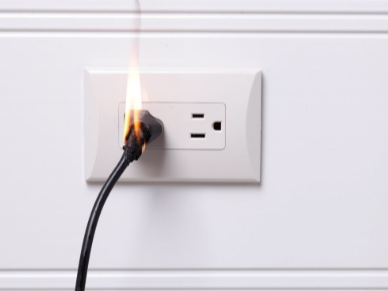Why Is the Power Only Out in One Room of the House?

Losing power in a single room of your home can be confusing and inconvenient. Unlike a full-house blackout, a localized power outage usually points to an issue within your electrical system rather than a problem with the utility company. Understanding the possible causes can help you respond quickly and know when it’s time to call an emergency electrician for help.
Electrical problems in just one room may seem minor, but they can be symptoms of a deeper issue—possibly even a dangerous one. It’s essential to investigate carefully and act wisely to avoid safety hazards.
Tripped Circuit Breaker
One of the most common reasons for losing power in one room is a tripped circuit breaker. Your electrical panel is divided into circuits, each serving different areas or appliances in your home. If too much electricity flows through one circuit, the breaker trips to prevent overheating and fires.
You can open your electrical panel and look for a breaker switch that’s in the “off” position or somewhere between “on” and “off.” Resetting it may restore power. However, if the breaker keeps tripping repeatedly, you’re dealing with an overload or faulty wiring—this is when you should contact an emergency electrician to inspect the issue safely and thoroughly.
Blown Fuse (in Older Homes)
If you live in an older home that still uses a fuse box instead of a circuit breaker panel, a blown fuse could be the cause. Fuses perform a similar function to breakers, cutting power when a circuit is overloaded. A blown fuse will need to be replaced with one of the same type and rating.
Changing fuses without the right knowledge can be dangerous, especially if you’re unsure of the cause. It’s best to have an emergency electrician handle it to avoid the risk of electrocution or fire hazards.
Faulty Outlet or Switch
Another reason the power may be out in a single room is a faulty outlet or light switch. Damaged wiring, a loose connection, or worn-out internal components can all prevent power from reaching that part of the circuit. In some cases, you may notice a burning smell or see discoloration around the outlet—clear signs of electrical damage.
Attempting to repair or replace outlets yourself can be risky. A licensed emergency electrician has the tools and expertise to fix the issue correctly while ensuring your home remains safe.
GFCI Outlet Has Tripped
In kitchens, bathrooms, and other areas where water is present, you may have GFCI (Ground Fault Circuit Interrupter) outlets. These are designed to shut off electrical flow in case of a ground fault. If a GFCI outlet trips, it might also cut power to other outlets or fixtures downstream on the same circuit—even in another room.
Press the “reset” button on the GFCI outlet to see if the power returns. If it trips again or won’t reset, it’s best to consult an emergency electrician to investigate what’s triggering the ground fault.
Damaged Wiring Behind the Walls
Sometimes, the problem isn’t in a visible outlet or breaker, but within the walls. Rodents, moisture, or aging materials can damage electrical wiring over time. When this happens, a specific circuit may lose power without any other obvious signs.
This type of issue is not only hard to detect but also a serious fire risk. If you suspect hidden wiring damage, it’s crucial to call an emergency electrician immediately. They can use diagnostic tools to locate and fix the problem before it escalates.
Overloaded Circuit
Powering too many high-demand devices—like space heaters, microwaves, or hairdryers—on one circuit can cause overloads that shut down a room’s power. Even if the breaker doesn’t trip visibly, sensitive internal mechanisms might still cut the power as a safety measure.
If you’re constantly losing power in the same room when multiple devices are used, it’s time to consider an upgrade. A qualified emergency electrician can assess your system and redistribute the electrical load more efficiently.
Loose Electrical Connections
Over time, wires and connections within outlets, switches, and junction boxes can become loose due to wear and tear or vibrations. These loose connections can interrupt power flow and potentially lead to arcing, which is a serious fire hazard.
This problem is often invisible to the untrained eye and should never be ignored. Call an emergency electrician if you suspect any loose or faulty wiring.
Read more: The Rise of Adaptive Tech
When Should You Call an Emergency Electrician?
If the power outage in one room is accompanied by burning smells, buzzing sounds, sparks, or flickering lights, do not attempt to troubleshoot it yourself. These are all signs of potential electrical fire hazards. You should also contact an emergency electrician if you’ve tried resetting the breaker and the power still doesn’t return.
A licensed emergency electrician can safely inspect your system, identify the root of the problem, and make any necessary repairs while ensuring your home remains up to code and hazard-free.
Conclusion
A power outage in just one room may seem like a small issue, but it often indicates a deeper electrical problem that should not be ignored. From tripped breakers and faulty outlets to damaged wiring and overloaded circuits, each scenario presents its own risks. When in doubt, it’s always safest to call an experienced emergency electrician. They’ll restore your power safely and ensure your home’s electrical system remains reliable and secure.




